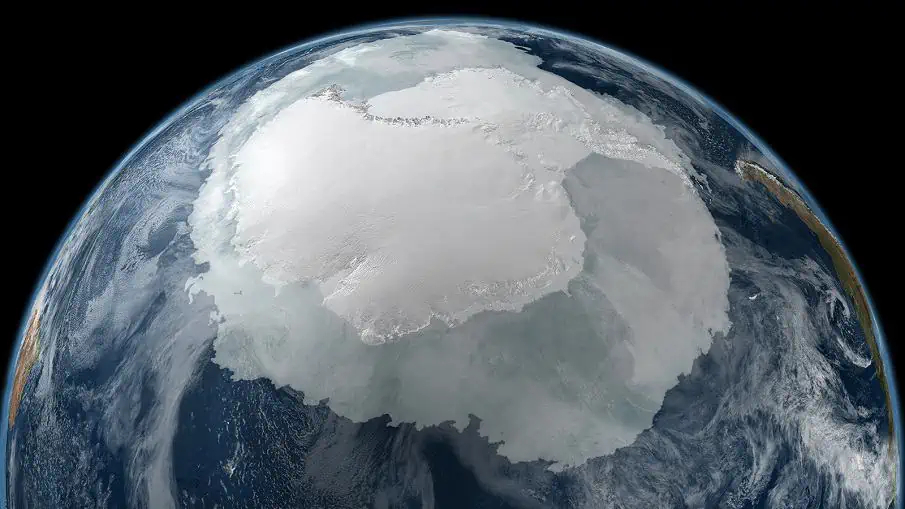According to scientists, ICE in Antarctica ‘suddenly appeared’ some 35 million years ago. One hundred million years before that, the continent remained free of ice.
But why? What triggered the formation of glaciers and a massive ice sheet at the South Pole?
One hundred million years before that, the continent remained free of ice.
Even after Antarctica moved to its current location, the now icy continent remained a subtropical heaven, but then mysteriously, around 35.5 million years ago ice covered the continent in around 100,00 years. Experts agree that this is an ‘overnight shift’ in geological terms.
With its 14.0 million square kilometers, Antarctica is the fifth largest Continent on our planet, and in other words, is twice the size of Australia.
In the distant past, before Antarctica drifted near its current position, the continent experienced a tropical or temperate climate, meaning that it was covered in forests, and inhabited by various ancient life forms. According to creation.com, the Northern Hemisphere Arctic lands are well-known for their warm-climate fossil plants and animals from the Mesozoic and early Cenozoic of the uniformitarian geological column.
In fact, scientists like Jane Francis of the University of Leeds have said that “I still find the idea that Antarctica was once forested absolutely mind-boggling. We take it for granted that Antarctica has always been a frozen wilderness, but the ice caps only appeared relatively recently in geological history.”
A drastic change: From a subtropical climate to a ‘barren’, frozen continent
Experts have long debated over what could have triggered the formation of Antarctica’s humongous Ice sheet. Scientists say that no evidence of global cooling has been found during the specific timetable which could explain the enigma.
A study performed nearly a decade ago offers interesting details.
In a study published in the Journal Science, experts found evidence of widespread cooling.
“Previous evidence points paradoxically to a stable climate at the same time this event, one of the biggest climate events in Earth’s history, was happening,” says Matthew Huber, assistant professor of earth and atmospheric sciences at Purdue University.“Our studies show that just over thirty-five million years ago, ‘poof,’ there was an ice sheet where there had been subtropical temperatures before,” Huber says. “Until now we haven’t had much scientific information about what happened.”
Experts explain that before the cooling period struck Earth at the end of the Eocene epoch, our planet was warm and wet, and the north and south poles experienced subtropical climates.
By that time, dinosaurs had already been wiped out, mammals, reptiles, and amphibians roamed the Earth.
Then, shockingly, this warm wet world, which had existed for millions of years, dramatically changed.
Temperatures fell dramatically, many species of mammals, as well as most reptiles and amphibians, became extinct, and Antarctica was covered in ice and sea levels fell.
Furthermore, Mark Pagani, professor of geology and geophysics at Yale University, says the research found that air and ocean surface temperatures dropped as much as 18 degrees Fahrenheit during the transition.
“Previous reconstructions gave no evidence of high-latitude cooling,” Pagani says. “Our data demonstrate a clear temperature drop in both hemispheres during this time.”Experts concluded: “We found that the likely culprit was a major drop in greenhouse gases in the atmosphere, especially CO2. From the temperature data and existing proxy records indicating a sharp drop in CO2 near the Eocene-Oligocene boundary, we are establishing a link between the sea surface temperatures and the glaciation of Antarctica.”

